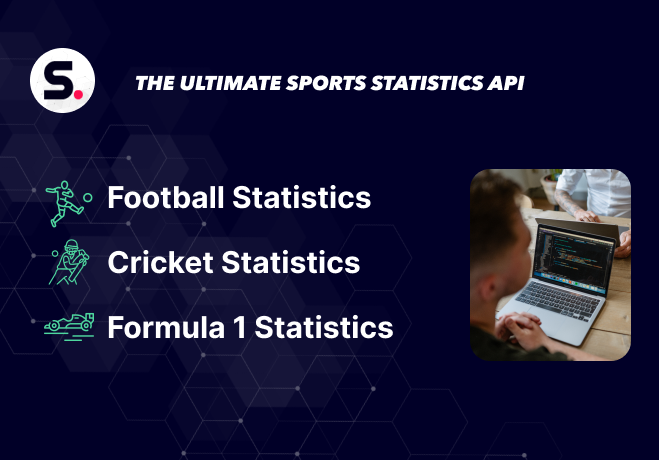
Contents
History of the Slovenian PrvaLiga
The Slovenian PrvaLiga is a young league tied to Slovenia’s declaration of independence from Yugoslavia in 1991. Before this, Slovenian football clubs were in the Yugoslav football league system. While some of the top Slovenian sides occasionally competed in the Yugoslav First League, the majority played in the Slovenian Republic League, which was a lower division within the Yugoslav structure.
As Slovenia moved towards independence, the need for its own national football league became apparent. In 1991, the Football Association of Slovenia (NZS) broke away from the Football Association of Yugoslavia and established its own footballing framework. This led to the formation of the Slovenian PrvaLiga for the 1991-92 season.
The inaugural season had a large number of teams – 21 – as it added clubs from the former Slovenian Republic League and the Slovenian teams that had been participating in the higher levels of the Yugoslav system. This initial format was quickly streamlined in subsequent seasons.
The early years of the PrvaLiga saw the dominance of NK Olimpija Ljubljana, who won the first four consecutive league titles. However, NK Maribor soon emerged as the league’s top performer, establishing a period of sustained success throughout the late 1990s and early 2000s, and continuing their dominance into the modern era.
The PrvaLiga has had several format changes throughout its history, including variations in the number of participating clubs and the competition structure. The current format, featuring 10 clubs playing each other four times in a season, has been in place since 2005.
The establishment of the PrvaLiga was an important step in cementing Slovenia’s national football identity. It provided a platform for Slovenian talent to develop and compete domestically, eventually leading to greater success for the Slovenian national team on the international stage.
Slovenian PrvaLiga format
The Slovenian PrvaLiga currently features 10 clubs that compete in a unique quadruple round-robin format. This means that each team plays every other team four times in a season – twice at home and twice away – resulting in a total of 36 matches per club. The season typically runs from late July to May, with a winter break occurring between December and February.
Points system
Teams are awarded three points for a victory, one point for a draw, and no points for a loss. At the end of the season, the club with the most accumulated points is crowned the Slovenian champion.
European qualification
The top teams in the PrvaLiga earn qualification for UEFA club competitions based on Slovenia’s UEFA coefficient ranking:
– The league champion qualifies for the UEFA Champions League first qualifying round.
– The runners-up and the third-placed team qualify for the UEFA Europa Conference League second qualifying round.
– The winner of the Slovenian Cup also qualifies for the UEFA Europa Conference League second qualifying round. If the cup winner has already secured a European spot through their league position, the next highest-placed league team (that hasn’t already qualified) will take the Europa Conference League place.
Promotion and relegation
– The club finishing at the bottom of the PrvaLiga table is directly relegated to the Slovenian Second League (2. SNL).
– The club finishing in ninth place (second from bottom) enters a two-legged relegation play-off against the runner-up of the Slovenian Second League to determine which team will play in the PrvaLiga the following season.
– The champion of the Slovenian Second League is automatically promoted to the PrvaLiga.
Slovenian PrvaLiga’s notable history
The Slovenian PrvaLiga has been the proving ground for many talented players and home to clubs that have shaped Slovenian football.
Notable clubs
– NK Maribor: Without a doubt the most successful club in PrvaLiga history, having the most league titles (16) and consistently competing at the top level. They are also the only Slovenian club to have reached the group stages of the UEFA Champions League on multiple occasions.
– NK Olimpija Ljubljana: The dominant force in the early years of the league, winning the first four titles. They remain a major club with a strong fanbase and a history of producing talented players. (Note: This refers to the original NK Olimpija, dissolved in 2005. The current NK Olimpija Ljubljana, founded in 2005, also boasts several league titles).
– ND Gorica: Another historically successful club with multiple league titles (4), particularly strong in the mid-2000s.
– NK Domžale: Known for their strong youth academy and 2 league titles in the mid-2000s. They have also been consistent participants in European qualifying rounds.
– NK Celje: One of the two founding clubs (along with Maribor) that have never been relegated from the PrvaLiga. They achieved their first league title in 2019-20, breaking the long-standing dominance of Maribor and Olimpija.
– NS Mura: Gained international attention by winning the league title in 2020-21 and for their memorable run in the UEFA Europa Conference League, which included a victory over Tottenham Hotspur.
Key players
– Zlatko Zahovič: Considered one of Slovenia’s greatest ever players, Zahovič began his career at Maribor before achieving international fame with clubs like Porto and Valencia.
– Josip Iličić: Started his career in Slovenia with Interblock and later Maribor before becoming a star in Italy’s Serie A.
– Samir Handanović: A world-class goalkeeper who played in Slovenia before moving to Italy, where he became a long-serving captain for Inter Milan.
– Milivoje Novaković: A prolific striker who played for several PrvaLiga clubs and was a key player for the Slovenian national team.
– Marcos Tavares: A long-serving and iconic striker for NK Maribor, holding records for most appearances (593) and most goals (211) in the PrvaLiga
– Tim Matavž: Began his career at HIT Gorica and later played for clubs like PSV Eindhoven and FC Augsburg, also a prominent figure for the national team.
The Slovenian PrvaLiga’s impact in Europe
While the Slovenian PrvaLiga may not have consistent success in UEFA club competitions like leagues from larger European nations, it has had moments of impact and continues to contribute to European football.
Club performances
Historically, NK Maribor has been the most prominent Slovenian club in European competitions. They have reached the group stages of the UEFA Champions League twice (1999-2000 and 2017-18), a significant achievement for Slovenian club football. Their consistent participation in the qualifying rounds of both the Champions League and the Europa League has helped raise the profile of the PrvaLiga.
Other clubs like NK Olimpija Ljubljana and ND Gorica have also had spells of reaching the later qualifying rounds of UEFA competitions and have occasionally featured in the group stages of the UEFA Europa League (formerly UEFA Cup). More recently, NS Mura gained attention with their participation in the UEFA Europa Conference League group stage in the 2021-22 season, even achieving a memorable victory over Tottenham Hotspur.
UEFA coefficient and league standing
The performance of PrvaLiga clubs in UEFA competitions directly contributes to Slovenia’s UEFA coefficient ranking. A higher coefficient means more favourable access to European tournaments for Slovenian clubs in subsequent seasons. While Slovenia’s coefficient is typically lower than that of the major European leagues (28 as of 2025), consistent progress in UEFA competitions by PrvaLiga teams is crucial for improving the country’s standing and ensuring continued representation in European football.
The shadow of the former Yugoslavia
Despite forming its own league in 1991, the Slovenian PrvaLiga still carries subtle traces of its shared past with the former Yugoslavia. Player movement remains active between Slovenia and its Balkan neighbours, with linguistic and cultural ties often playing a role in transfers. While direct club rivalries from the Yugoslav era have largely faded, encounters with teams from Croatia, Serbia, or Bosnia in European competitions can carry an extra layer of historical weight and intensity. There are also potential similarities in playing styles and tactical approaches that have a shared footballing heritage in the region. Though Slovenia has firmly established its own footballing identity, the historical connections with its former Yugoslav counterparts continue to provide an interesting undercurrent to the PrvaLiga.
Your shortcut to reliable football data
Football apps thrive on fresh, dependable data. Sportmonks football API offers easy access to up-to-date scores, match details, and player insights across leagues globally. Whether you’re building a fan-focused website, a betting app, or a dynamic fantasy football platform, Sportmonks helps you deliver engaging experiences with minimal effort. Start exploring our API for free today.



